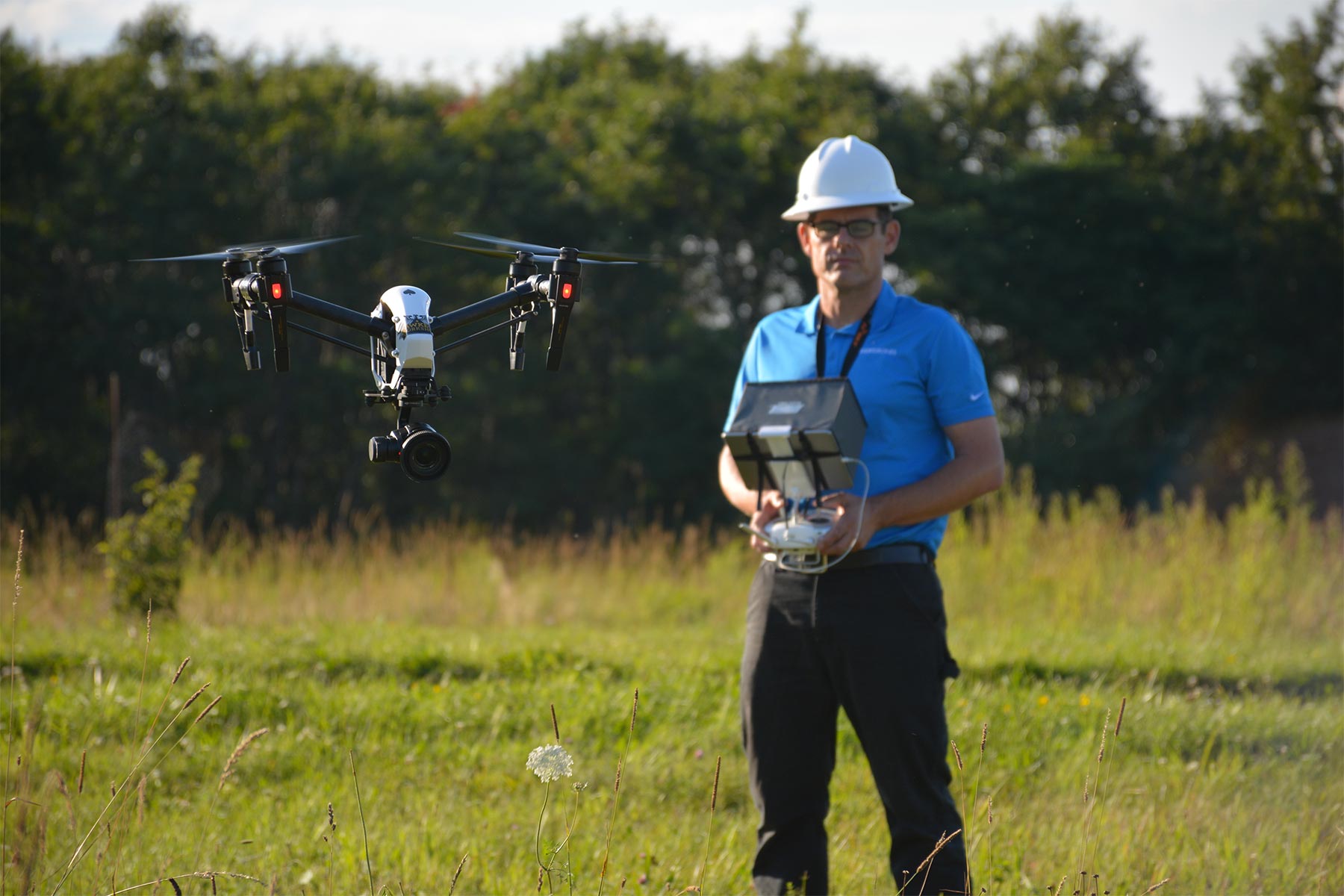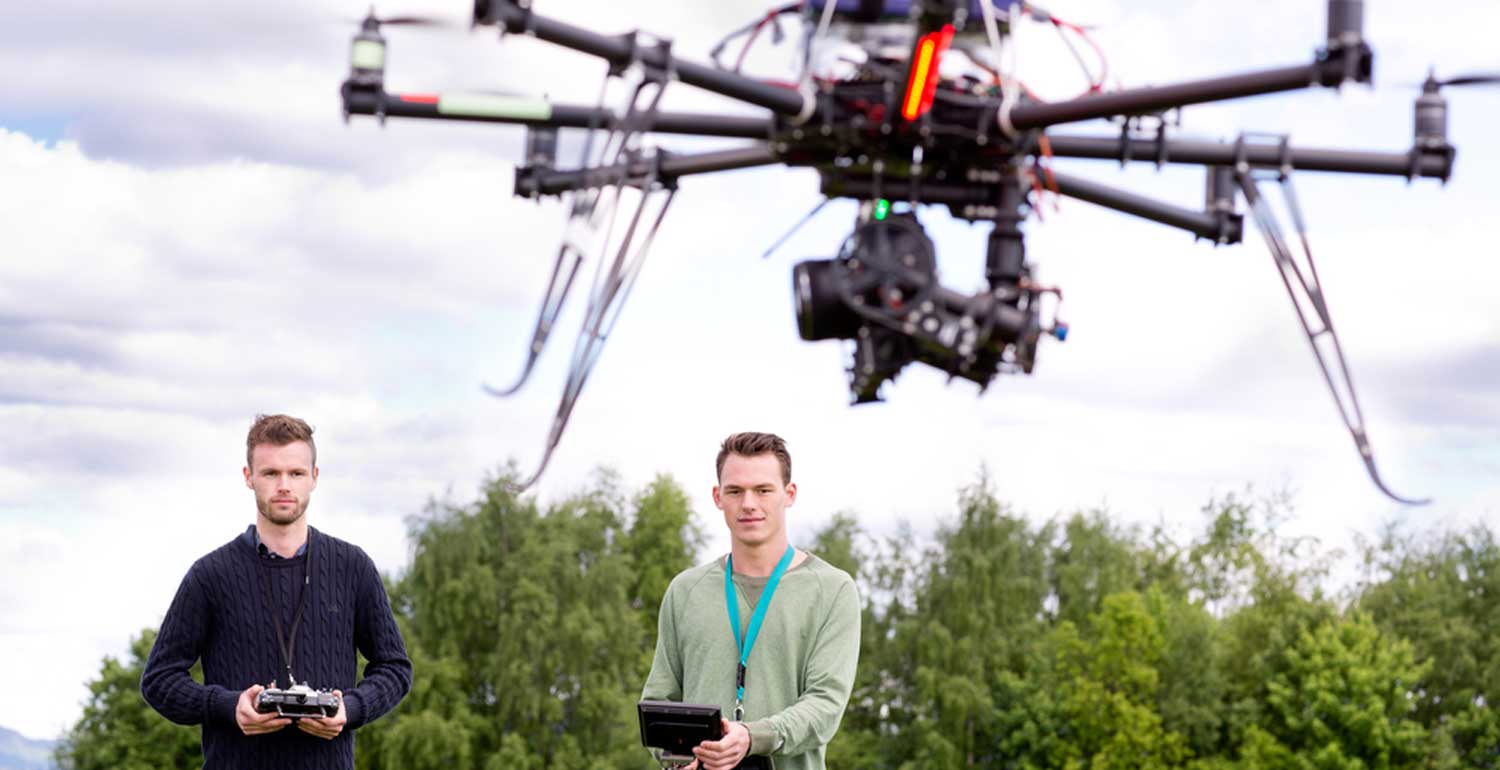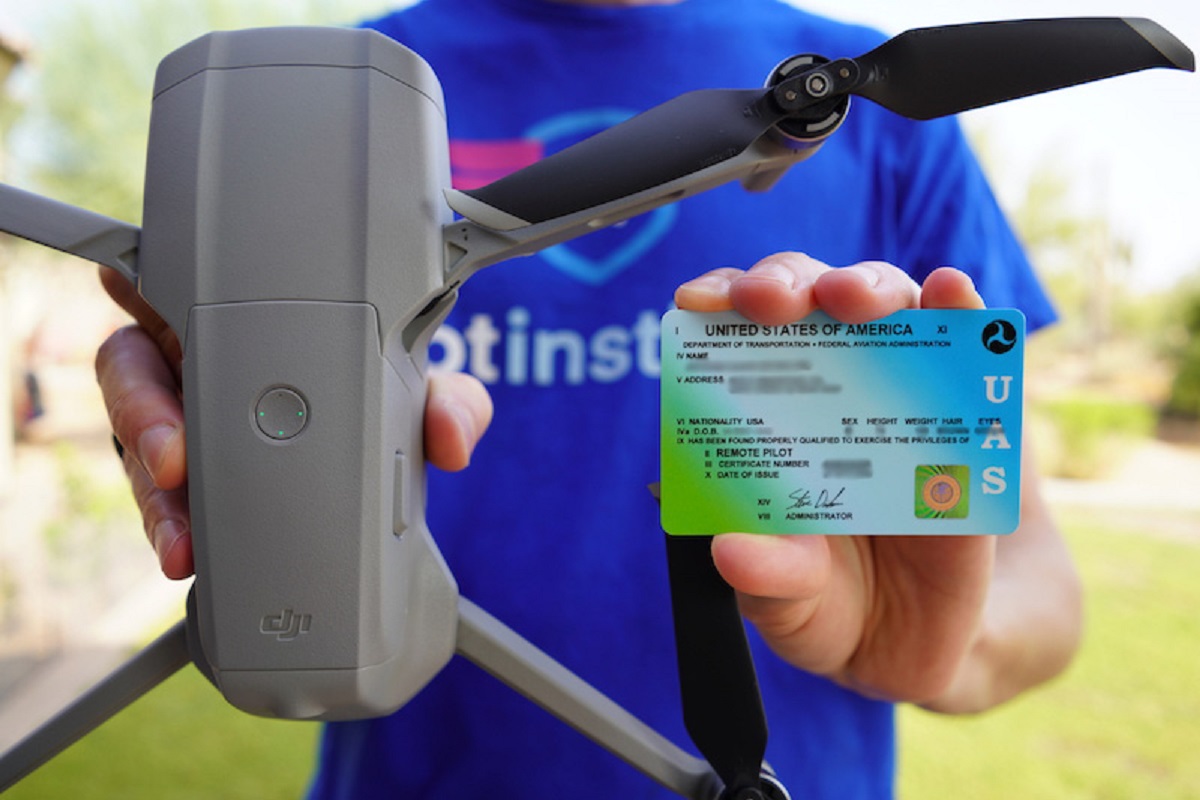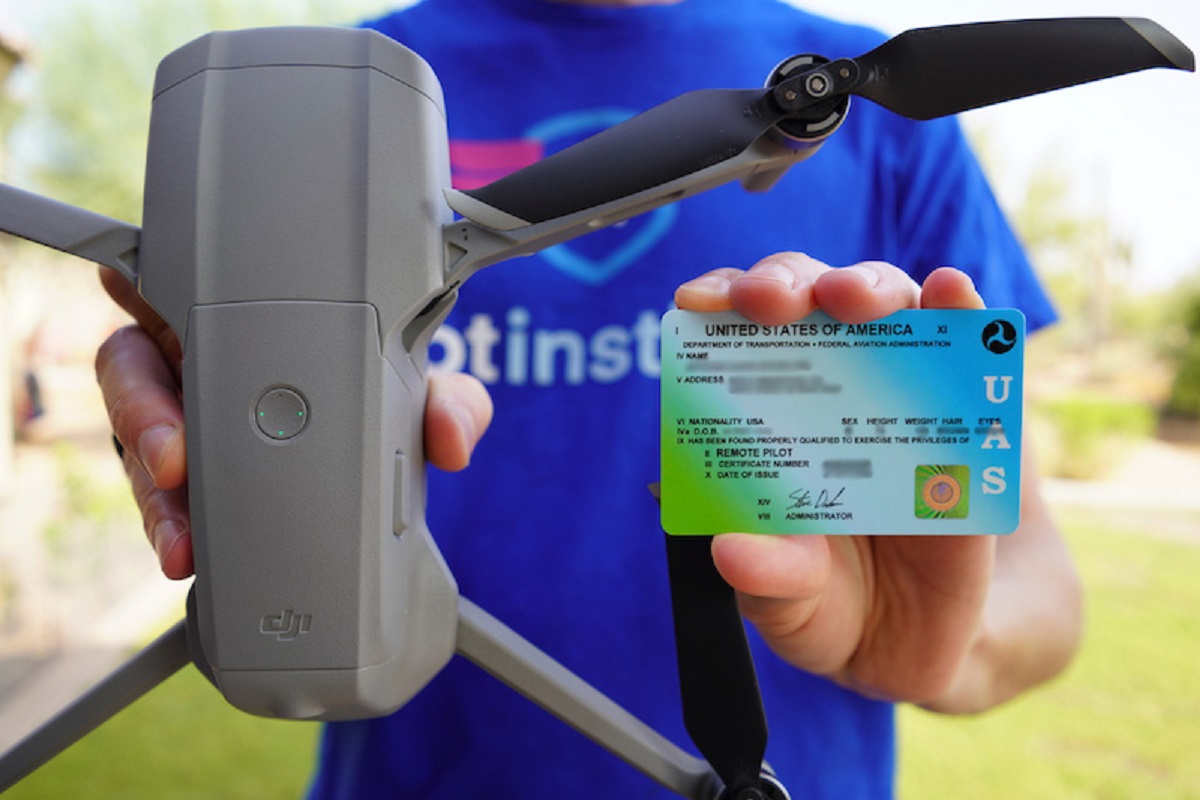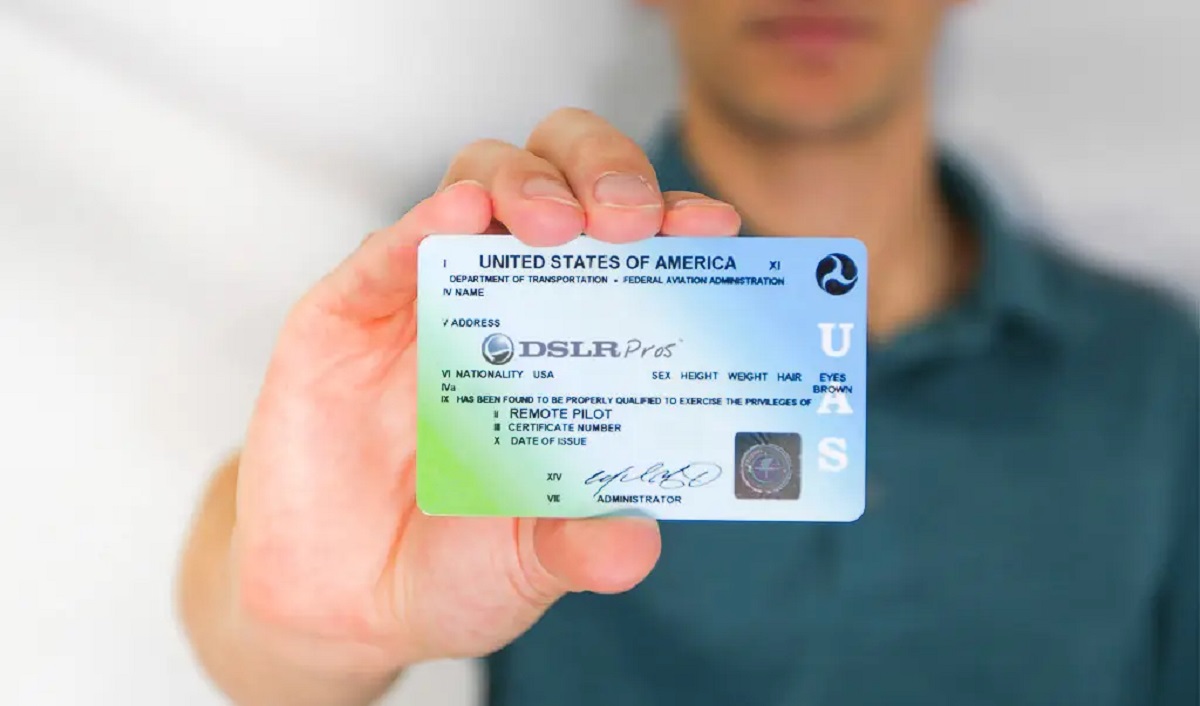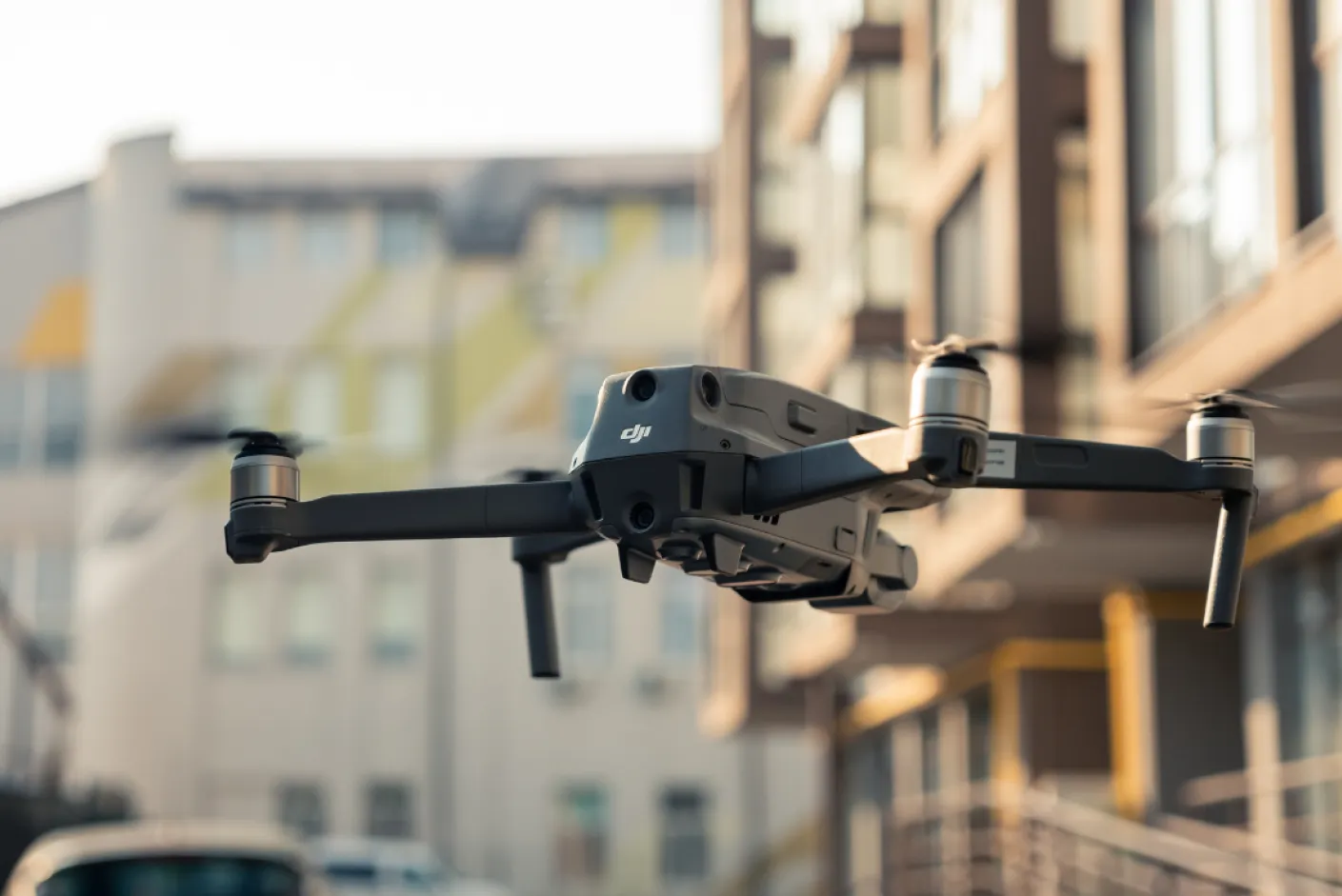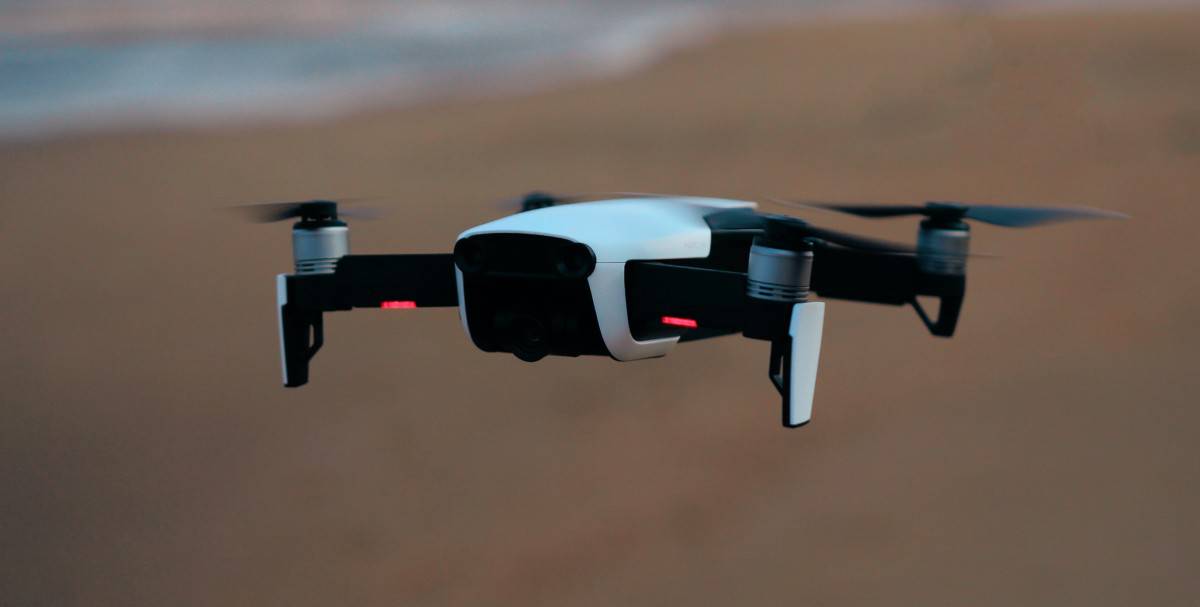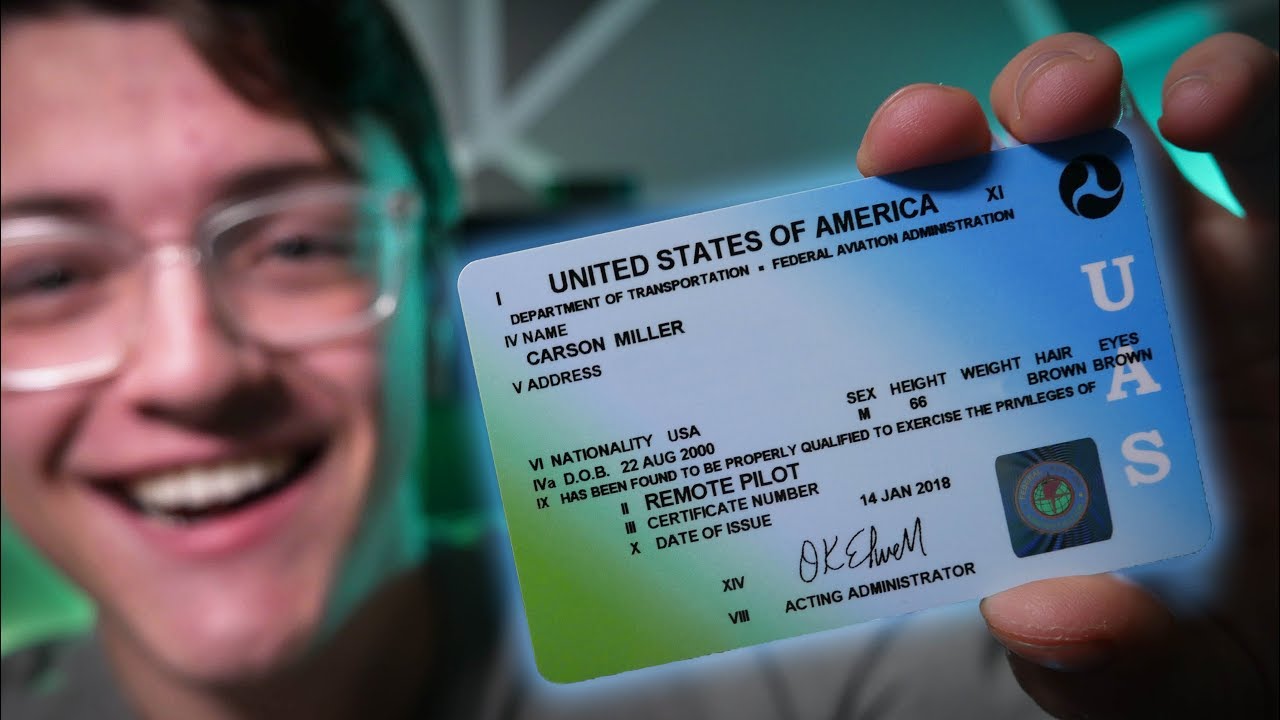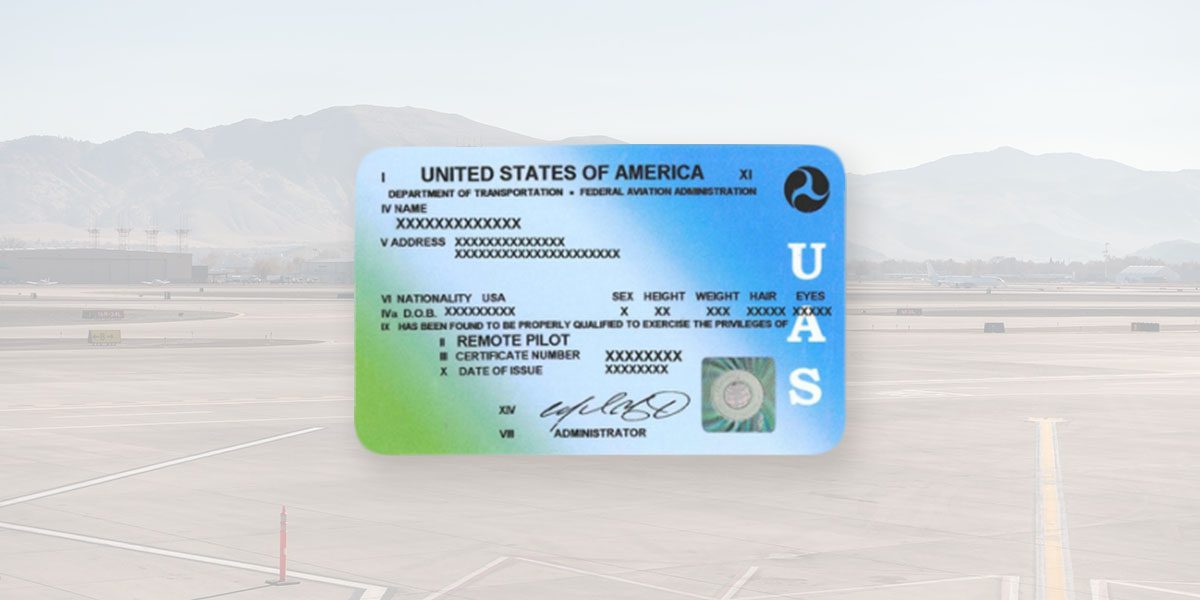Introduction
The use of drones has become increasingly popular in various industries, from photography and videography to surveying and inspections. With the growing demand for skilled drone pilots, becoming a licensed drone pilot can open up new and exciting opportunities.
However, obtaining a remote pilot certificate is not as simple as purchasing a drone and taking it out for a spin. There are specific requirements and steps that aspiring drone pilots need to follow to become licensed and legally operate their drones.
In this article, we will explore the process and requirements for becoming a licensed drone pilot. Whether you are a hobbyist looking to turn your passion into a profession or an individual interested in adding drone piloting as a skillset for your current job, this guide will provide you with the necessary information to get started on your journey.
From understanding the licensing process to studying for the Part 107 knowledge test, scheduling and taking the test, and applying for your remote pilot certificate, each step plays a crucial role in becoming a licensed drone pilot. Additionally, we will discuss the importance of complying with FAA rules and regulations, as well as the requirements for recurrent training and certification renewal to ensure you maintain your licensed status.
By following these steps and acquiring the appropriate certification, you will not only achieve legal compliance but also gain the knowledge and skills necessary to operate drones safely and responsibly. So, let’s dive into the requirements and step-by-step process of becoming a licensed drone pilot.
Understanding the Requirements
Before embarking on the journey to become a licensed drone pilot, it is essential to understand the requirements set by the Federal Aviation Administration (FAA) in the United States. These requirements ensure the safe and responsible operation of drones in the national airspace.
The primary requirement for obtaining a remote pilot certificate is to pass the FAA’s Part 107 knowledge test. This test assesses your understanding of airspace regulations, weather patterns, emergency procedures, and drone operation. It is crucial to have a solid understanding of these topics to ensure the safety of yourself, others, and the drone.
Along with passing the knowledge test, there are a few other key requirements to keep in mind. Firstly, you must be at least 16 years old to apply for a remote pilot certificate. Secondly, you must be able to read, speak, write, and understand English, as this is the language used for communication in aviation.
An important requirement is that you must be a U.S. citizen, permanent resident, or have a valid non-immigrant visa. This requirement ensures that those operating drones have a legal status in the country and are familiar with the laws and regulations governing airspace operations.
Furthermore, it is crucial to have a clean record with aviation authorities. If you have previously had your pilot certificate revoked or suspended, it may affect your eligibility to become a licensed drone pilot.
Understanding and meeting these requirements will set the foundation for your journey to becoming a licensed drone pilot. It is important to take these requirements seriously and ensure that you meet all of them before progressing further in the licensing process.
Step 1: Research the Licensing Process
Before diving into the licensing process, it is crucial to thoroughly research and understand the requirements and steps involved. By doing so, you can properly prepare yourself and make informed decisions throughout the process.
Start by visiting the FAA’s official website, where you will find a wealth of information regarding drone operation and licensing. Familiarize yourself with Part 107 of the Federal Aviation Regulations, which outlines the rules and regulations for operating drones commercially.
Additionally, explore online forums, discussion boards, and drone communities to gain insights from experienced drone pilots. Engage in conversations, ask questions, and seek advice to get a better understanding of the practical aspects of obtaining a remote pilot certificate.
During your research, take note of any changes or updates to the regulations and requirements. The drone industry is constantly evolving, and staying up to date with the latest information is vital for a successful licensing process.
Furthermore, consider reaching out to local drone training schools or organizations that offer courses and training for aspiring drone pilots. These institutions can provide you with valuable guidance, resources, and hands-on training that will help you prepare for the Part 107 knowledge test.
Researching the licensing process will equip you with the necessary knowledge and resources to navigate through the remaining steps with confidence. It will also give you a clearer understanding of the commitment and effort required to become a licensed drone pilot. With this knowledge, you can move forward and take the necessary steps towards achieving your goal.
Step 2: Meeting the Age and Citizenship Requirements
Meeting the age and citizenship requirements is an essential step in becoming a licensed drone pilot. The Federal Aviation Administration (FAA) has established these requirements to ensure that individuals operating drones have the necessary maturity and legal status to do so responsibly.
To apply for a remote pilot certificate, you must be at least 16 years old. This age requirement ensures that individuals have a certain level of maturity and understanding of the rules and responsibilities associated with operating drones.
Additionally, you must be a U.S. citizen, permanent resident, or hold a valid non-immigrant visa. This requirement is in place to ensure that drone pilots have a legal status in the country and are familiar with the laws and regulations governing airspace operations.
When applying for your remote pilot certificate, you may be required to provide proof of your age and citizenship or legal residency status. This can be done by submitting a valid passport, birth certificate, or other government-issued identification documents.
It is crucial to ensure that you meet these requirements before proceeding with the licensing process. If you do not meet the age or citizenship criteria, it is advisable to wait until you are eligible to apply for the remote pilot certificate.
By meeting the age and citizenship requirements, you demonstrate your commitment to operating drones responsibly and in compliance with the FAA’s regulations. This step paves the way for your eligibility to proceed with the next stages of the licensing process.
Step 3: Study for the Part 107 Knowledge Test
Studying for the Part 107 knowledge test is a crucial step towards becoming a licensed drone pilot. This test assesses your understanding of airspace regulations, weather patterns, emergency procedures, and drone operation, ensuring that you have the necessary knowledge to operate a drone safely and responsibly.
Start by obtaining study materials recommended by the FAA, such as the Remote Pilot – Small Unmanned Aircraft Systems Study Guide. This guide covers the topics that will be tested in the Part 107 exam. You can also find online resources, video tutorials, and practice tests to supplement your studies.
When studying, pay special attention to topics such as airspace classification, operating requirements, pilot responsibilities, weather effects on drones, and emergency procedures. Understanding these concepts will not only help you pass the exam but also prepare you for real-life situations when operating a drone.
It is important to allocate dedicated study time each day or week, depending on your schedule and learning pace. Make use of various study techniques, such as creating flashcards, taking practice tests, and reviewing key concepts repeatedly. This will help reinforce your understanding of the material and improve your chances of success in the knowledge test.
Consider joining online study groups or forums dedicated to Part 107 exam preparation. Engaging with other aspiring drone pilots can provide additional insights, support, and motivation throughout your study journey.
Remember to pace yourself and avoid cramming all the information at once. Give yourself enough time to absorb and comprehend the material thoroughly. Take breaks, stay hydrated, and maintain a healthy study routine to remain focused and avoid burnout.
By thoroughly studying for the Part 107 knowledge test, you are building a solid foundation of knowledge that will serve you well in your journey to becoming a licensed drone pilot. So, dive into the material, stay committed, and aim for success in the examination.
Step 4: Schedule and Take the Knowledge Test
After thorough preparation, it’s time to schedule and take the Part 107 knowledge test. This exam is administered by an FAA-approved testing center and is designed to evaluate your knowledge and understanding of drone operation and airspace regulations.
To schedule the knowledge test, visit the FAA’s official website or contact an FAA-approved testing center in your area. Choose a date and time that works best for you, ensuring you have enough time to review any last-minute study materials before the exam.
On the day of the test, arrive early at the testing center with the necessary identification documents, which may include a valid government-issued photo ID. You may also need to provide proof of eligibility such as your age and citizenship or legal residency status.
The knowledge test consists of multiple-choice questions that cover various topics related to drone operation. You will have a specified amount of time to complete the exam, so manage your time wisely and read each question carefully before selecting your answer.
Remember, the goal of the knowledge test is to assess your understanding of the regulations and safety measures associated with drone operation. Apply the knowledge you have gained during your study and reference relevant resources as needed.
Once you have completed the exam, you will receive your score immediately. A passing score is required to proceed with the licensing process. If you pass the test, congratulations! You have taken a significant step towards becoming a licensed drone pilot. If you do not pass, take it as an opportunity to identify areas of weakness and continue studying before retaking the test.
Obtaining a passing score in the knowledge test demonstrates your ability to operate drones safely and responsibly within the guidelines set by the FAA. With this achievement, you are one step closer to obtaining your remote pilot certificate.
Stay focused, confident, and calm during the knowledge test. It is the culmination of your preparation and the gateway to a rewarding career or hobby as a licensed drone pilot.
Step 5: Prepare for the Practical Test
Once you have successfully passed the Part 107 knowledge test, the next step in becoming a licensed drone pilot is to prepare for the practical test. This test evaluates your ability to operate a drone safely and effectively in real-world scenarios.
Before scheduling the practical test, ensure that you have access to a suitable drone and the necessary equipment required for the examination. Familiarize yourself with the specific requirements set by the FAA for the practical test, as well as any additional guidelines provided by the testing center.
Review the FAA’s Remote Pilot – Small Unmanned Aircraft Systems Airman Certification Standards, which outline the tasks and performance standards you will be evaluated on during the practical test. Make sure you understand each task and practice them diligently to build your skills and confidence.
During your preparation, focus on areas such as pre-flight preparation, airspace management, emergency procedures, and efficient flight maneuvers. Practice operating the drone in various weather conditions and simulated real-world scenarios to enhance your decision-making skills and adaptability.
Consider enrolling in a practical training course or seeking guidance from experienced drone pilots who can provide hands-on training and tips for the practical test. These resources can help refine your flying techniques and ensure that you are well-prepared to demonstrate your competency during the examination.
Remember to adhere to safety protocols and follow the FAA’s guidelines during your practice sessions. Safety should always be a top priority when operating a drone, and it is essential to demonstrate your commitment to safe and responsible drone piloting during the practical test.
By thoroughly preparing for the practical test, you will enter the examination with confidence and the necessary skills to showcase your abilities as a licensed drone pilot. Take the time to practice and refine your techniques, and you will be well-prepared to demonstrate your proficiency on the day of the test.
Step 6: Apply for Your Remote Pilot Certificate
After successfully completing the Part 107 knowledge test and the practical examination, you are ready to apply for your remote pilot certificate. This certificate is the official document issued by the Federal Aviation Administration (FAA) that validates your eligibility to operate drones commercially.
To apply for the remote pilot certificate, you will need to complete the FAA’s online application form. Provide accurate and up-to-date information, including your personal details, contact information, and any required documentation as specified by the FAA.
As part of the application process, you may be required to pass a TSA background check. This background check ensures that you have a clean record and are not a security threat when operating drones. The TSA will process your application and inform you of the outcome.
After submitting your application, the FAA will review your information and documentation. Upon successful completion of the review process, you will receive your remote pilot certificate. This certificate will include your name, unique identification number, and the expiration date of your certification.
Once you receive your remote pilot certificate, you are officially recognized as a licensed drone pilot. Ensure that you keep your certificate in a safe place and carry it with you whenever you are operating a drone commercially.
It is important to note that your remote pilot certificate comes with responsibilities. You must adhere to the rules and regulations set by the FAA, operate your drone within the relevant airspace restrictions, and always prioritize safety during your flights.
By applying for and obtaining your remote pilot certificate, you have completed a significant milestone on your journey to becoming a licensed drone pilot. This certification opens up opportunities for you to pursue a career or engage in commercial drone operations while ensuring compliance with the FAA’s regulations.
Congratulations on reaching this step! Take pride in your achievement and embrace the responsibilities and privileges that come with being a licensed drone pilot.
Step 7: Comply with FAA Rules and Regulations
After obtaining your remote pilot certificate, it is crucial to fully understand and comply with the rules and regulations set by the Federal Aviation Administration (FAA). These regulations are designed to ensure the safe operation of drones and protect the airspace for all users.
One of the key regulations to adhere to is Part 107 of the Federal Aviation Regulations. This regulation outlines the operational limitations, airspace restrictions, and requirements for commercial drone pilots. It is important to familiarize yourself with the specific rules and guidelines applicable to your drone operations.
When operating your drone, always fly within visual line of sight (VLOS) and maintain a safe distance from other aircraft. It is also essential to respect people’s privacy and property rights while conducting your flights. Stay informed about any Temporary Flight Restrictions (TFRs) or airspace restrictions in your operating area before each flight.
Additionally, make sure to register your drone with the FAA if it weighs more than 0.55 pounds (FAA registration is not required for drones under this weight). Display the registration number on your drone to comply with the FAA’s guidelines.
Keep up-to-date with the latest FAA regulations and guidelines as they may change or evolve over time. The FAA provides resources and updates on their website that can help you stay informed about any updates or modifications to the rules.
Regularly review your knowledge of operational procedures, emergency protocols, and flight skills to ensure your continued compliance with FAA rules. This will help you maintain a high standard of safety and professionalism as a licensed drone pilot.
By complying with the FAA rules and regulations, you demonstrate your commitment to responsible and lawful drone operations. It is crucial to operate within the established guidelines and prioritize safety at all times. Not only does this ensure your own safety and the safety of others, but it also helps foster a positive image for the drone industry as a whole.
Stay informed, stay compliant, and continue learning to enhance your skills and knowledge as a licensed drone pilot.
Step 8: Recurrent Training and Certification Renewal
Obtaining a remote pilot certificate is not a one-time achievement. As a licensed drone pilot, it is essential to continuously update and improve your skills through recurrent training and certification renewal.
The Federal Aviation Administration (FAA) requires licensed drone pilots to renew their certification every two years. This process ensures that pilots stay up to date with the latest regulations and continue to meet the proficiency standards set by the FAA.
To maintain your certification, you must pass a recurrent knowledge test. This test covers key topics relevant to drone operation and airspace regulations. Stay informed about any changes or updates to the FAA regulations and guidelines to ensure you are prepared for the recurrent test.
In addition to the recurrent knowledge test, consider pursuing recurrent training to enhance your skills and knowledge as a drone pilot. Recurrent training courses can provide valuable insights into emerging technologies, advanced flight maneuvers, and best practices for safe and efficient drone operations.
Stay connected with the drone community by attending industry conferences, workshops, and networking events. These opportunities allow you to learn from experienced professionals, exchange ideas, and stay informed about the latest developments in the field.
As technology advances and the drone industry evolves, it is essential to stay abreast of emerging trends and regulations. Continuously educating yourself and improving your skills will set you apart as a knowledgeable and proficient drone pilot.
Remember to maintain a logbook of your flight hours and experiences, noting any challenges or lessons learned during your operations. Reflecting on your flight history can help identify areas for improvement and guide your recurrent training efforts.
By engaging in recurrent training and staying up to date with certification renewal requirements, you demonstrate your commitment to maintaining the highest standards of safety and professionalism as a licensed drone pilot. Embrace the opportunity to continue growing and evolving in this dynamic industry.
Conclusion
Becoming a licensed drone pilot requires dedication, knowledge, and adherence to the rules and regulations set by the Federal Aviation Administration (FAA). By following the step-by-step process outlined in this guide, you can embark on a successful journey towards obtaining your remote pilot certificate.
From researching the licensing process to studying for the Part 107 knowledge test, scheduling and taking the test, preparing for the practical examination, and applying for your remote pilot certificate, each step plays a vital role in becoming a licensed drone pilot.
Throughout the process, it is crucial to comply with FAA rules and regulations, operate drones responsibly, and prioritize safety at all times. Continuing education, recurrent training, and staying informed about the latest changes in the industry and regulations are essential for maintaining your certification and improving your skills as a drone pilot.
Remember, being a licensed drone pilot comes with responsibilities. Respect the airspace regulations, privacy rights, and safety of all individuals and property during your drone operations. Stay professional, ethical, and contribute to the positive growth of the drone industry.
By achieving your remote pilot certificate, you open up opportunities to pursue a career or engage in commercial drone operations. As technology evolves, this field continues to expand, offering new and exciting possibilities for licensed drone pilots.
So, embrace the process, stay committed, and enjoy the journey of becoming a licensed drone pilot. Fly responsibly, follow the guidelines, and continue to enhance your skills and knowledge in this rapidly evolving industry.
Best of luck in your pursuit of becoming a licensed drone pilot, and may your drone flights soar to new heights!







